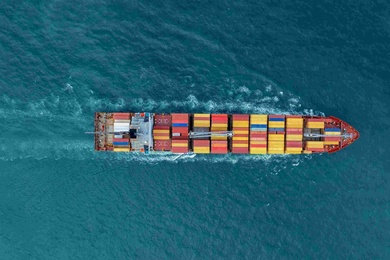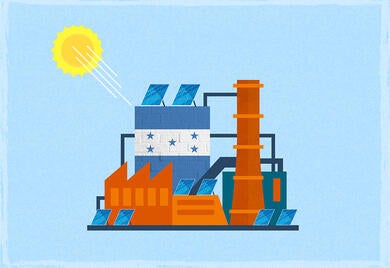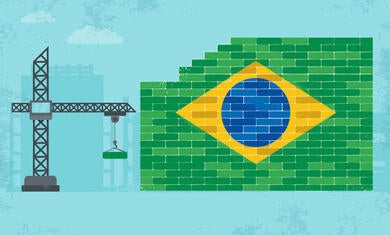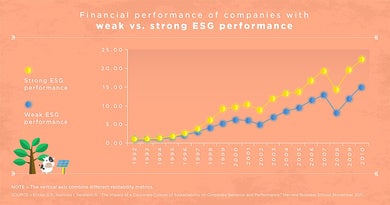Blogs Navigation
Sustainable BusinessRecent posts

How to Measure Job Creation in Development Projects
Development finance institutions need to know how many jobs their investments support and create, yet obtaining reliable data is a challenge. To address this, IDB Invest is piloting a new framework to measure the contribution of development project portfolios to employment in Latin America and the Caribbean.

In the Face of Sustainability Challenges, Strong Governance Begins in the Boardroom
Boards of Directors must lead mitigation strategies, embedding long-term planning and innovation into risk oversight. IDB Invest empowers directors to transform climate governance into resilience, opportunity, and competitive advantage across diverse sectors.

36,000 Transactions That Transformed Regional Trade
Since 2005, the Trade Finance Facilitation Program has promoted financial inclusion, trade resilience, and regional integration among countries through financial solutions, strengthening local capacities, and promoting sustainability.

Solar energy: The revolution spurring development in Honduras
When Invema plant, the main plastic recycler in Honduras starts operating, a success formula resonates. It is one of the commercial companies that took advantage of the photovoltaic energy boom in the country. Its case demonstrates how the private sector’s investment in solar energy can facilitate greater economic and sustainable development for the country. Six years ago, the executives of the firm decided to install solar panels in the company, so it could generate its own power. This initiative promised a 20% reduction in energy consumption as well as a significant reduction in greenhouse gases emissions of polluting gases. And so it was. Today, Invema obtains energy savings up to 30% in electricity and reinvests in the focus of its business, recycling, so much so that it is now manufacturing the bottles that Coca-Cola uses in Central America. “We are very proud, because thanks to the solar panels, IDB Invest’s doors/channels opened up and allowed us to make the investments we dreamed,” says George Gatlin, the manager of Invema, which is located in the northern city of San Pedro Sula. Invema is part of many companies and private consortia that have opted for photovoltaic energy since Honduras decided to reform its electricity subsector to revert its electricity matrix from thermal to renewable. The reforms began in 2012, when generation using fossil fuels accounted for 70% compared to 30% for renewables. This thermal hegemony was reflected in increasing oil billing, carbon dioxide emissions, high tariffs up to US$0.30 per kilowatt (KW) produced, and frequent rationing. Following the reforms, led by the government with the advisory services of the Inter-American Development Bank (IDB), there was an upsurge in renewable energy until the energy matrix was completely reversed compared to 2012. The latest report from the Central Bank of Honduras (BCH) in 2018 records a 75% electricity generation based on renewable sources, and an 11% share of photovoltaic energy. This percentage translated into 433 megawatts (MW) of installed capacity at the end of 2016, placing Honduras in the lead of solar generation in Central America and third in Latin America, after Chile and Mexico. “We are witnessing a revolution in the electricity sector, not just in Honduras, but worldwide, because energy storage is changing the concept, points out Carlos Jácome, IDB energy specialist who has participated in the reforms process in Honduras. “The Bank support comprises studies and soft financing. Later, the savings make it possible to improve the productivity of these companies because they can use what they no longer pay in energy to expand their businesses,” comments Jácome. Since 2012, the IDB and IDB Invest have provided technical assistance to Honduran commercial, industrial, and institutional sectors to investigate the technical and financial feasibility of photovoltaic projects. To date, 22 studies have been completed for projects ranging from 40 kilowatts (kW) to nearly 3 MW of installed capacity. Official reports indicate that interest in photovoltaic projects have increased due to a reduction in about 40% of the installation costs over the last five years. Behind this innovation there are three combined components that have resulted in a successful formula: i) the impetus of government that created favorable conditions for investment; ii) the decisions made by entrepreneurial companies; and iii) the IDB’s ability to evaluate and finance the projects. The initial investments in photovoltaic development in Honduras involved a shared risk for IDB Invest and its clients. Nonetheless, what made the difference is the technical capabilities of the Bank for evaluating and support for this type of investments. The Honduran experience encourages entrepreneurship and new markets while demonstrating that IDB Invest is the partner of choice for innovative markets. Experiences of this kind should be replicated in the region. The first photovoltaic investments began in 2015, when 388 MW were installed, followed by 45 MV more in 2016, according to reports from the National Electrical Energy Company (ENEE). According to the ENEE, the Honduran commercial and industrial solar energy market is quite different from what it was in 2012, starting with changes in electricity billing (between 11 and 18 cents per kW per hour), installation costs for panels, legal regulations, and the availability of photovoltaic manpower in the region. In addition to this, national capacities have developed with the installation and administration of photovoltaic projects. “Before, if a Canadian, Spaniard or a Costa Rican person did not show up to supervise the project it didn’t move forward. Now the Hondurans themselves have been strengthening all these positions. There is a friendly environment for investment,” notes Elsia Paz, President of the Honduran Renewable Energy Association (EHER), one of the entities that emerged in the context of these reforms. Download the full story here: “Solar Energy: The Revolution Spurring Development in Honduras” Subscribe to receive more content like this! [mc4wp_form]

Can your trip to the beach help reduce poverty?
As summer comes to an end in the Northern Hemisphere, many of us have been asking and answering the same question: how was your vacation? Our responses typically include anecdotes about the food, people, and places we encountered along the way. Perhaps we could also be asking ourselves how our vacation impacted those people and places.

What is the private sector’s role in the path to development? The case of Paraguay
The productive sector of Latin America and Caribbean countries faces constant challenges. In the case of Paraguay, notable challenges include difficulty accessing financing and the lack of infrastructure to boost development. However, during the last decade this country has gradually positioned itself in international trade thanks to the development of its agri-food industry, among other factors. Thus, in research developed by the Inter-American Development Bank Group, we have detected five areas in which the private sector can support the development of Paraguay:

Brazil: Infrastructure Challenges and Opportunities
Within weeks of the Brazil Investment Forum, the development of the economy of South America’s colossus presents numerous challenges and opportunities. A major one is how to continue providing incentives for private sector investment in infrastructure to bridge the country’s funding gap. Synergies among development entities open up new and interesting opportunities for this market.

Sustainability boosts agribusinesses
The gap between companies that do only what is essential in managing sustainability versus those who are already capturing its benefits could soon become an irreversible gap that buries some but catapults others.

Why is mobile broadband quality so important for development?
Latin America and the Caribbean is a region of contrasts. Almost everyone has a cell phone, as evidenced by the exponential increase in mobile phone subscribers from 10% of the population in 2000 to over 70% in 2017. And, the region is home to some of the most advanced mobile internet and avid social media users in the world, led by Mexico, Argentina, and Brazil. Yet coverage varies across countries and millions of people still do not have access to reliable mobile broadband connections, particularly in rural areas. And, even for those with access, service quality is often poor, limiting their potential to take full advantage of the latest technologies and making it difficult to bridge the digital divide.


